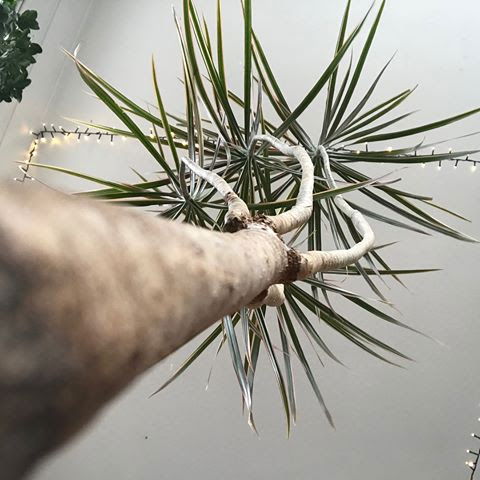
Dracaena reflexa var. angustifolia 'Tricolor'
Contents
- Top Tips
- Location, Water, Humidity & Fertilisation
- Common Issues
- Origins, Temperature, Propagation, Repotting & Toxicity.
Need the answer to a specific plant query? Book a 1-to-1 live text or video-call session with THE HOUSEPLANT DOCTOR™, the website's friendly author, to overcome and address your niggling problem! Available on iMessage, WhatsApp, Facebook Messenger & more.
Top Tips & Info
- Care Difficulty: Easy
- Light: Within 2m (6ft) of a window is best. They can also tolerate sunlight for up to half a day.
- Watering: Dragon Trees prefer to be on the drier side to life; allow half of the soil to dry out in between irrigations. Less is more with this plant!
- Temperature: Above 12ºC (54ºF).
- Fertilise using a 'Houseplant' labelled feed every fourth water, all year round.
- Repot roughly every three years with a 'Houseplant' labelled compost & the next sized pot. Avoid using terracotta as this can be bad for the root system.
- Pests: Mealybugs, Whitefly & Euonymus Scale are common insects that can affect any type of Dracaena; check in the nooks of the stems & the leaf's undersides for possible outbreaks.
- Toxicity: Toxic to pets & humans when eaten.
Light & Location (Where to Keep a Dragon Tree Indoors)
All rooms in your home will be a great spot for a Dracaena, as long as the plant is kept within 2m (6ft) of a window. They cannot grow in darker areas as it'll produce leggy growth that can snap easily. The best spot is in a windowsill that offers morning sunlight until 11am, but they can easily grow in sunless windows, too. Never place your Dracaena in a windowless room or in a spot that's colder than 12ºC (54ºF).
Suitable Rooms for Dracaena: Any room with a window, or conservatories, or porches.
Temperature: 12° - 32°C (54° - 90°F)
Humidity: Normal room humidity levels are fine so there's no need to mist the foliage!
Watering (How Much & How Often)
Less is more with Dragon Trees. Only water the soil once the majority has dried in between waters. Feel the weight of the pot and if the foliage feels heavier than the soil/pot, this is a good time for another drink. Pour water through the potting mix until it drips through the drainage holes below to ensure the plant is thoroughly hydrated. And remember, never rehydrate this plant while the soil is still moist - it must start to feel dry in between waters. Tap water is safe for Dragon Trees, but try using collected rainwater instead for hydration.
Under-watering symptoms include dry leaf-edges & stunted/slow growth, which could be caused by a nearby operating heater or direct sunlight that dries the soil quicker than expected.
Over-watering symptoms include rapidly yellowing older leaves, stunted growth, a softened stem where its bark 'flakes off' and soil mould appearing on the soil. Click here to learn about root rot.
Fertilisers (How Often & Recommended Products)
It's important to feed your Dragon Tree every third water, all year round, as Dracaena don't often have a definitive dormancy period. All 'houseplant' labelled fertilisers will do the job nicely, but the best feeds to use for Dragon Trees are Liquid Gold Leaf (UK only) or Plantsmith.
Extra Tip: You can also use 'Foliar Feeds' that should be misted on the leaves. This will provide nutrients quicker for your Dracaena, but aren't necessary if you regularly use the normal feeds.
Maintenance (Do Dragon Trees Need Pruning?)
Pruning the Leaves: You can prune the yellow or crispy brown tips off, but this is only temporary as it's a 50% chance of the yellowing edges re-appearing later on. It's always better to cut the entire leaf to improve your Dracaena's appearance than to prune around the crispy areas.
Pruning the Stems: You can cut Dragon Tree's stem back by 20cm (8in) to promote new shoots below. Feel free to root the prunings in water to make another separate plant!
How to Repot a Dragon Tree (How Often & Recommended Soils, Pot Sizes)
Repot every three years in the spring, using a 'Dracaena' labelled compost and the next sized pot with drainage holes.
A Step-by-Step Guide on Repotting Dragon Trees
1. Water the soil around twelve hours before you the repotting to reduce the risk of transplant shock.
2. Choose a pot that’s only a few centimetres wider than the original, and add 4cm of fresh 'Dracaena' labelled potting mix. You can use a generic 'Houseplant' labelled compost, but these aren't as good as the first option for drainage reasons.
3. Sit the plant's rootball on top of the compost (in the pot), before filling the gaps between the pot and rootball with further soil. Tap the side of the pot several times to remove any air pockets. Never compact the soil by pushing it down with your fingers.
4. Finally, give the plant a thorough soak until the water drains out of the drainage holes. Move back to its original location to minimise shock and water slightly less often (by an extra three days) as the unrooted soil will hold onto water for the plant to absorb.
Repotting FAQs
What are the symptoms of a Dragon Tree being root bound?
Slowed growth, a deformed plastic pot, and roots growing through the drainage holes (more than 5cm, 2 inches in length).
Why is my Dragon Tree wilting/dying after repotting it? (& what can I do to help)
This is a clear case of the rootball being overly disturbed when being repotted. Never pull soil from the healthy roots as this will result in the plant wilting due to inability to then absorb moisture. For now, don't fall in the trap of over-watering and only rehydrate the soil once it feels dry to the touch. The plant will either start to look better within six weeks, or you will have to take stem cuttings if symptoms worsen.
Are there any extra tips for Dragon Trees grown in a dark area? More than 1m (3ft) from window)
Firstly, because of the lower light levels, you can delay the repotting frequency to every fourth year with no issues. The darker the location, the slower the stems and roots will grow. Further, you can also add some perlite to the potting mix when repotting to increase aeration (which reduces root rot chances).
What sized pot should I repot a Dragon Tree into?
These plant must only be transplanted into a pot that's up to 5cm (2in) wider than its original. Never use a pot that's larger than this, or one that doesn't have drainage holes in the bottom (irregardless of the size).
What pot type/material is best; terracotta or plastic?
THE HOUSEPLANT DOCTOR™ would avoid using terracotta or ceramic pots as these will become colder than plastic ones when the soil is moist. Dragon Trees (Dracaena) prefer a warmer root zone, so try repotting only in plastic pots which are known to keep the rootball warmer.
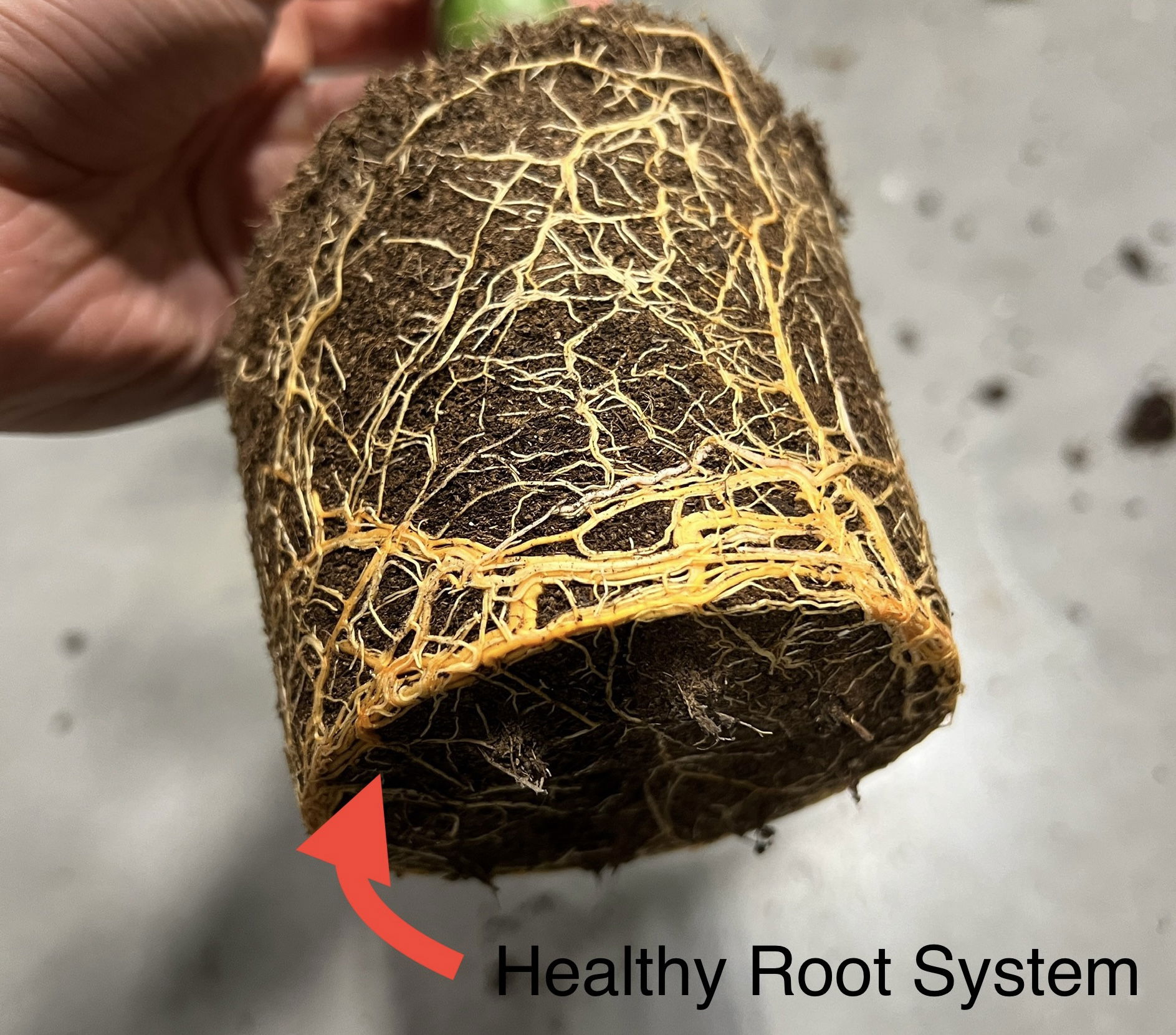
What does a healthy Dragon Tree root system look like?
A healthy Dracaena root system will be an orange-red colour that feels plump when gently squeezed. Rotten roots will be brown, flattened (when gently pinched) and can easily be pulled off from the soil.
Do Dracaena like to be root bound?
Absolutely. It's always better to have a potbound Dragon Tree than to mess-up the repotting (by using a too large pot, or disturbing the roots). If the roots that appear through the drainage holes are more than 5cm (2in), this is a perfect time to repot.
What compost is best for Dracaena?
THE HOUSEPLANT DOCTOR™ recommends using a 'Dracaena' labelled potting mix for the ultimate growth. A generic 'Houseplant' labelled potting mix will also work though.
Do Dracaenas like big pots?
No. It's always best to keep a Dragon Tree potbound for around three years before repotting it into the next sized pot. Only use a pot that's up to 5cm wider than its current one.
Should I water the Dracaena the same amount after repotting it as before?
So, the amount of water won't change - you should only stop pouring water once it drips out on the drainage holes below each time. The only aspect of your watering regime that must change is the frequency in which you rehydrate the soil. If you were watering it once every seven days, try watering every ten days, etc. Less often is best!
Need help with repotting your Dracaena?
Book a 1-to-1 video call with THE HOUSEPLANT DOCTOR™ if you'd like a personal instructor on repotting your houseplant. This will include recommending the right branded-compost and pot size, followed by a live video call whilst you transplant to ensure it's done right!

Similarly to the ZZ Plant (pictured), your Dragon Tree will benefit from having a few holes in its plastic pot to reduce the risk of root rot. We recommend using a soldering iron or sharp pencil to complete this task before placing the plant in it.
FAQ's & Common Issues with Dragon Trees (Dracaena)
Why has the smallest plant died in my pot of three Dragon Trees? (See image below)
The death of the smaller plant is a common issue with Dracaena and is most likely caused by too low light. The canopy of the two larger plants may be blocking the light, which results in death. If all of the smallest plant's leaves have yellowed or fallen off, this spells the end for this specific plantlet. The other two should continue to grow healthy once you remove the dead one though!
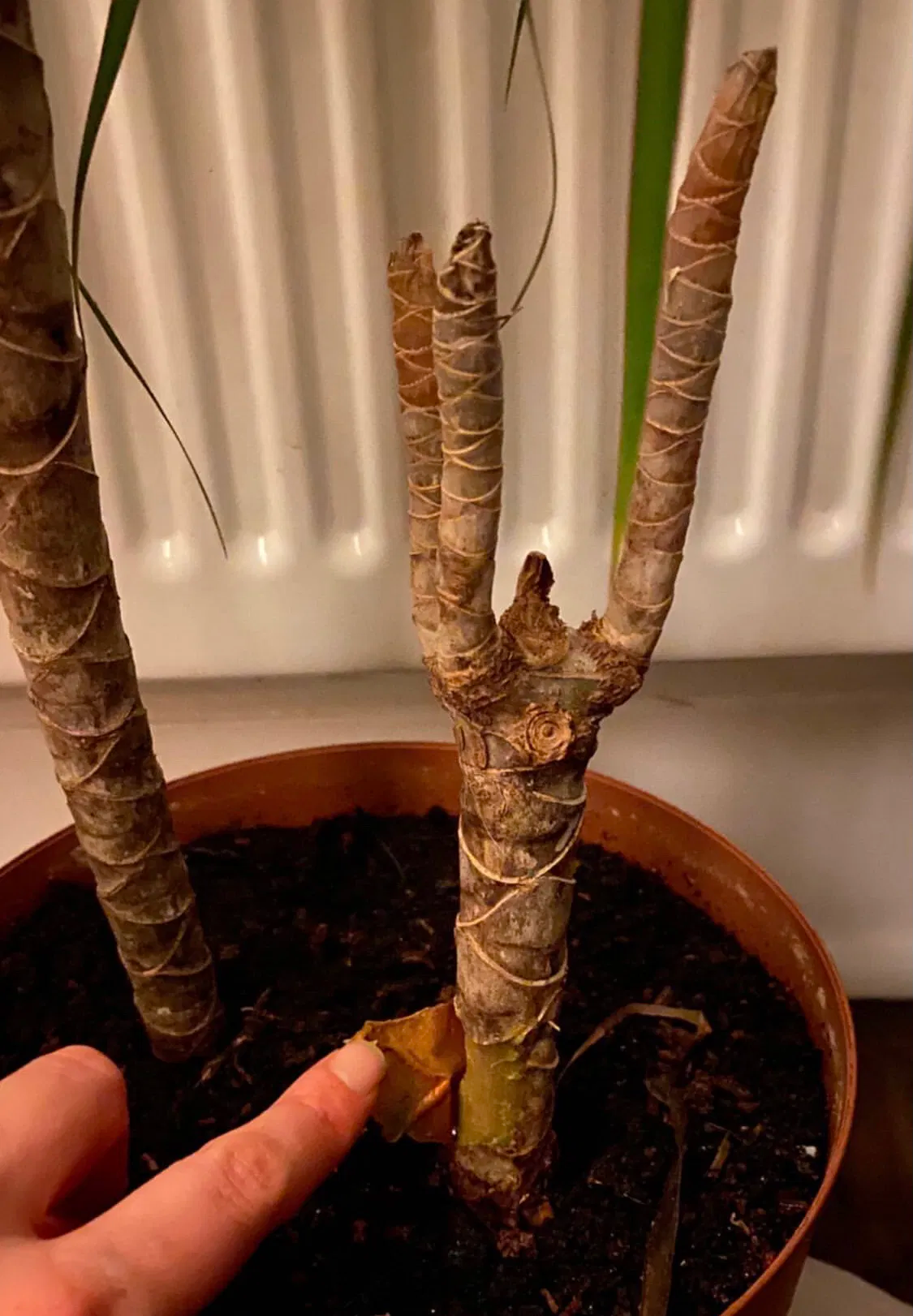 This is the first example of root rot on a Dracaena, which was caused mostly from too frequent watering & the larger plant blocking the light to the smaller one. This dead plantlet must be removed immediately to allow the other to survive.
This is the first example of root rot on a Dracaena, which was caused mostly from too frequent watering & the larger plant blocking the light to the smaller one. This dead plantlet must be removed immediately to allow the other to survive.

This is the second example of what root rot looks like on a Dracaena (Dragon Tree). Notice how the roots are stunted and lack a healthy root tip. With a root system like this, THE HOUSEPLANT DOCTOR™ recommends to repot it in a 12cm plastic pot with fresh 'Dracaena' labelled potting mix. Avoid using terracotta or ceramic pots as these container materials become cold when the soil is moist, thus reducing the root system's growth rates as they prefer warmer conditions.
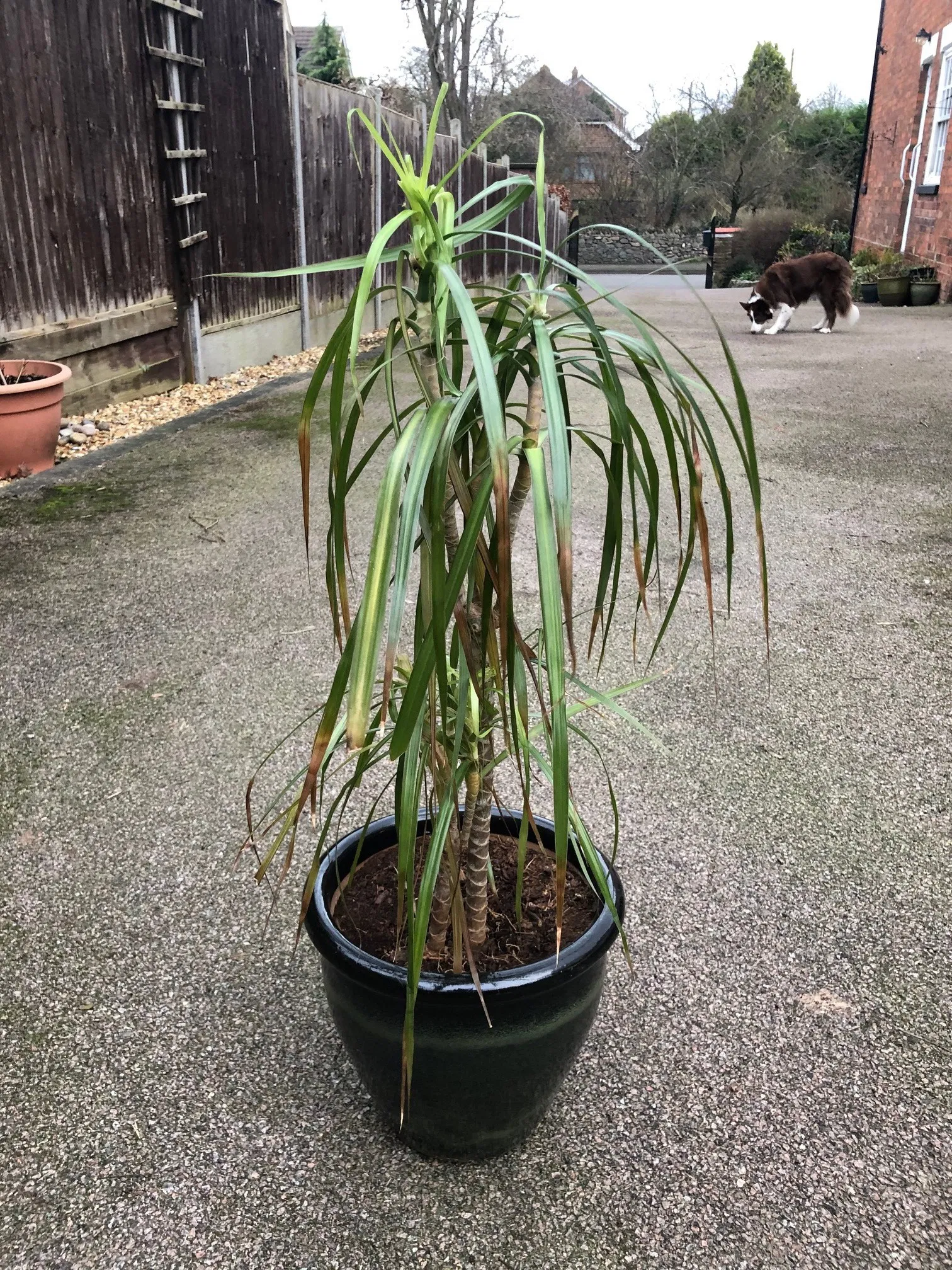
This Dragon Tree (Dracaena marginata) was left in the outside during winter and soon developed both root rot and temperature damage. This is another example of root rot on a Dracaena.
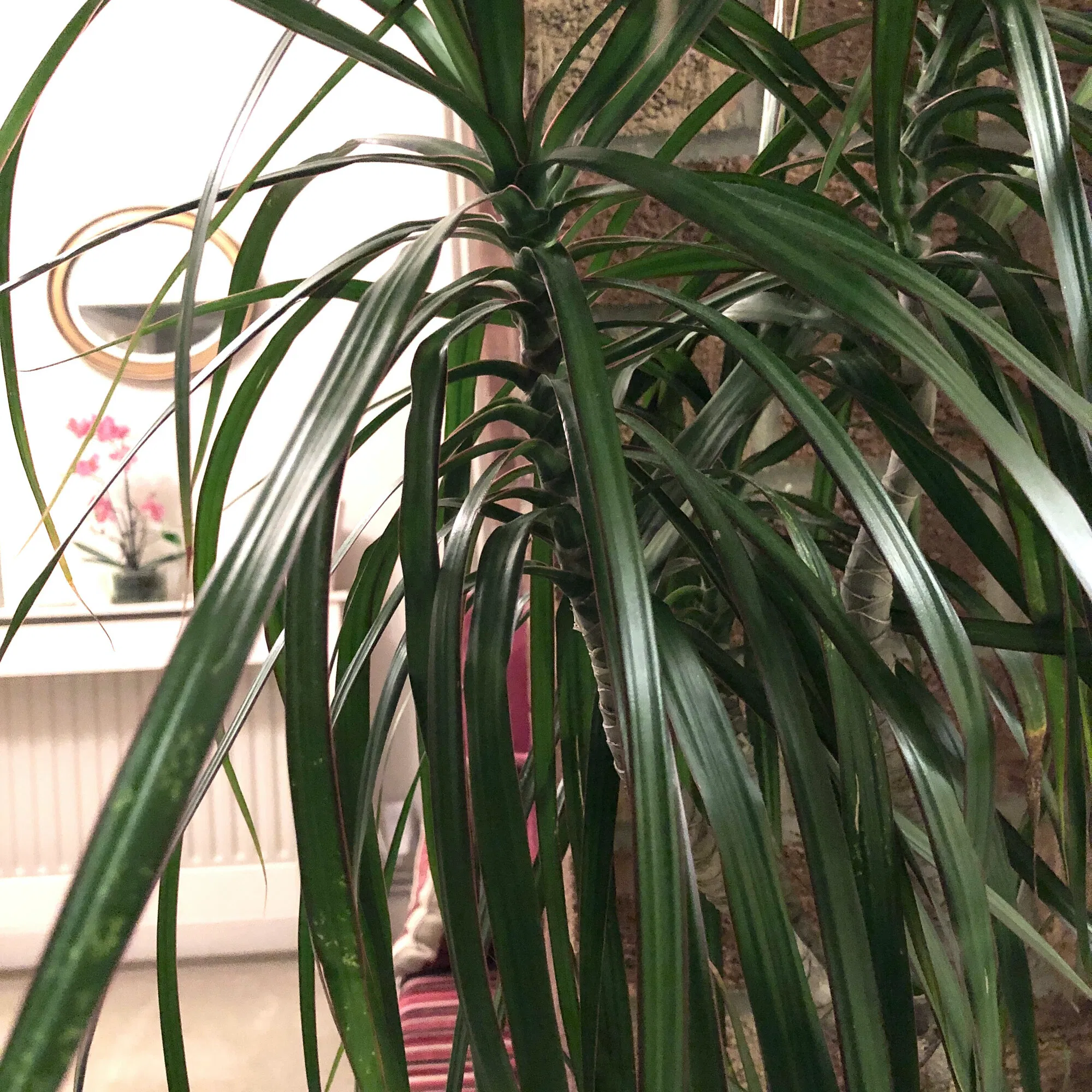
Why are my Dragon Tree leaves wilting suddenly?
Unless your Dragon Tree is leaning to the light, leaves that droop downwards could be a clear sign of root rot, even if they're not yellow/brown. Check the root system for signs of root rot; scroll down to see an image of a healthy Dracaena rootball (via 'Repotting' on this article). Image above shows the subtle drooping its leaves.
Do you water a Dragon Tree from the top or by sitting it in water?
THE HOUSEPLANT DOCTOR™ (the website's author) recommends to only water your Dracaena from the top as the soil can absorb too much water when submerged for more than ten minutes. This is especially important for Dragon Trees larger than 1m (3ft) in height, as bigger pots are more likely to hold an excess of moisture, thus risking the chance of root rot.
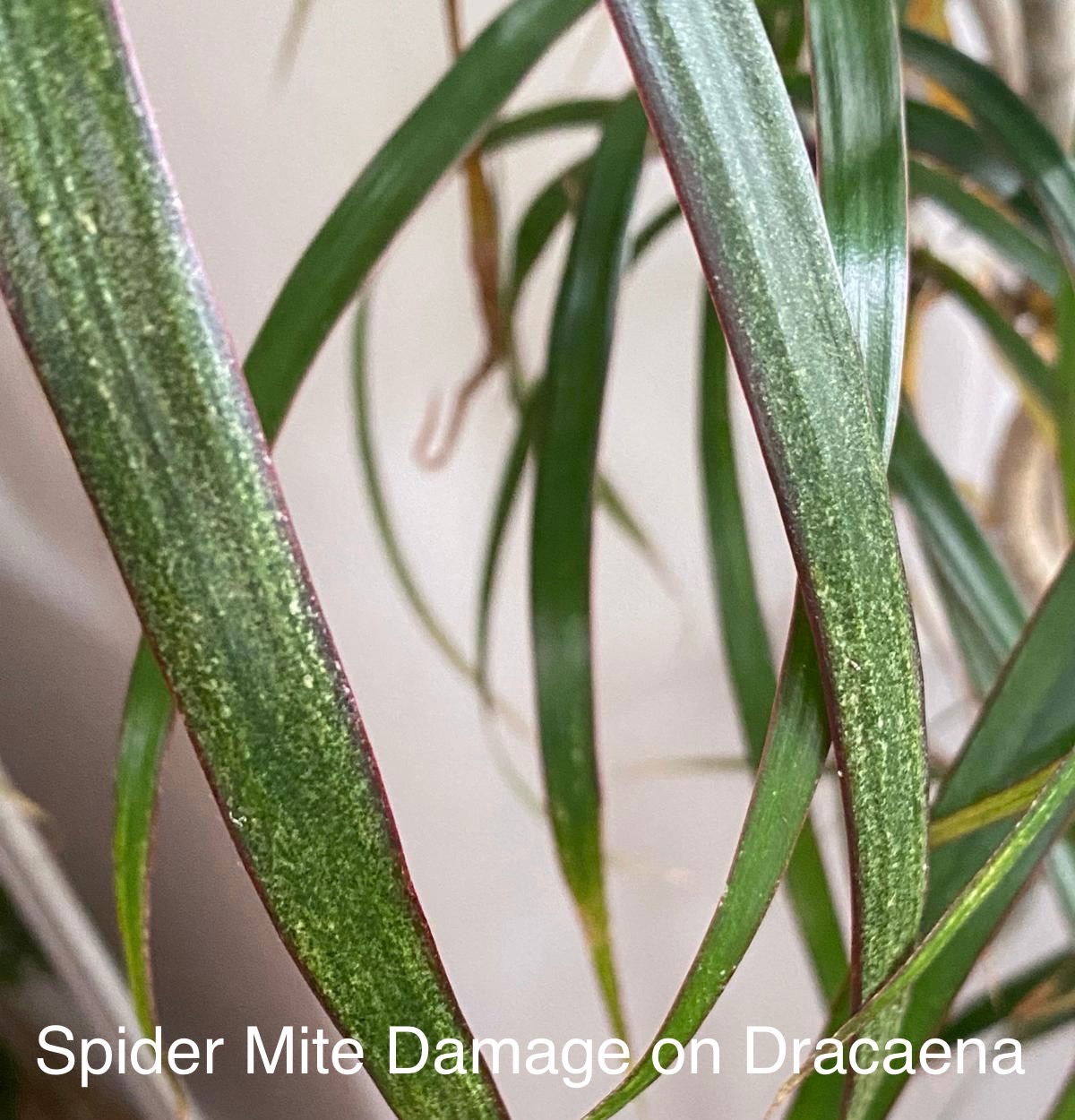
Why are these white spots on my Dragon Tree?
Spider Mites will develop small webs across the creases under the leaves and will slowly damage the leaf over the course of a few months. At this point in the image, THE HOUSEPLANT DOCTOR™ recommends to wipe both sides of the foliage with a damp cloth with water and soap detergent before using a product called 'SMC Control' to eradicate them.
Why are the leaf tips on my Dragon Tree yellow or brown? (See image below)
This could be one of three issues, including root rot (via over-watering), low temperatures (below 10ºC, 50ºF), or just a case of the leaf ageing slowly. If you're worried about your Dracaena, feel free to book an appointment with THE HOUSEPLANT DOCTOR™ where he'll immediately point you in the right direction. dracaena marginata
How do I wash my Dragon Tree's leaves?
You can either use a cloth of warm water to wipe both sides of the leaves, or simply hose the Dracaena in the shower to remove the dust. Only rinse this plant when the soil is dry as it could cause over-watering issues if it's too soon after a recent drink.
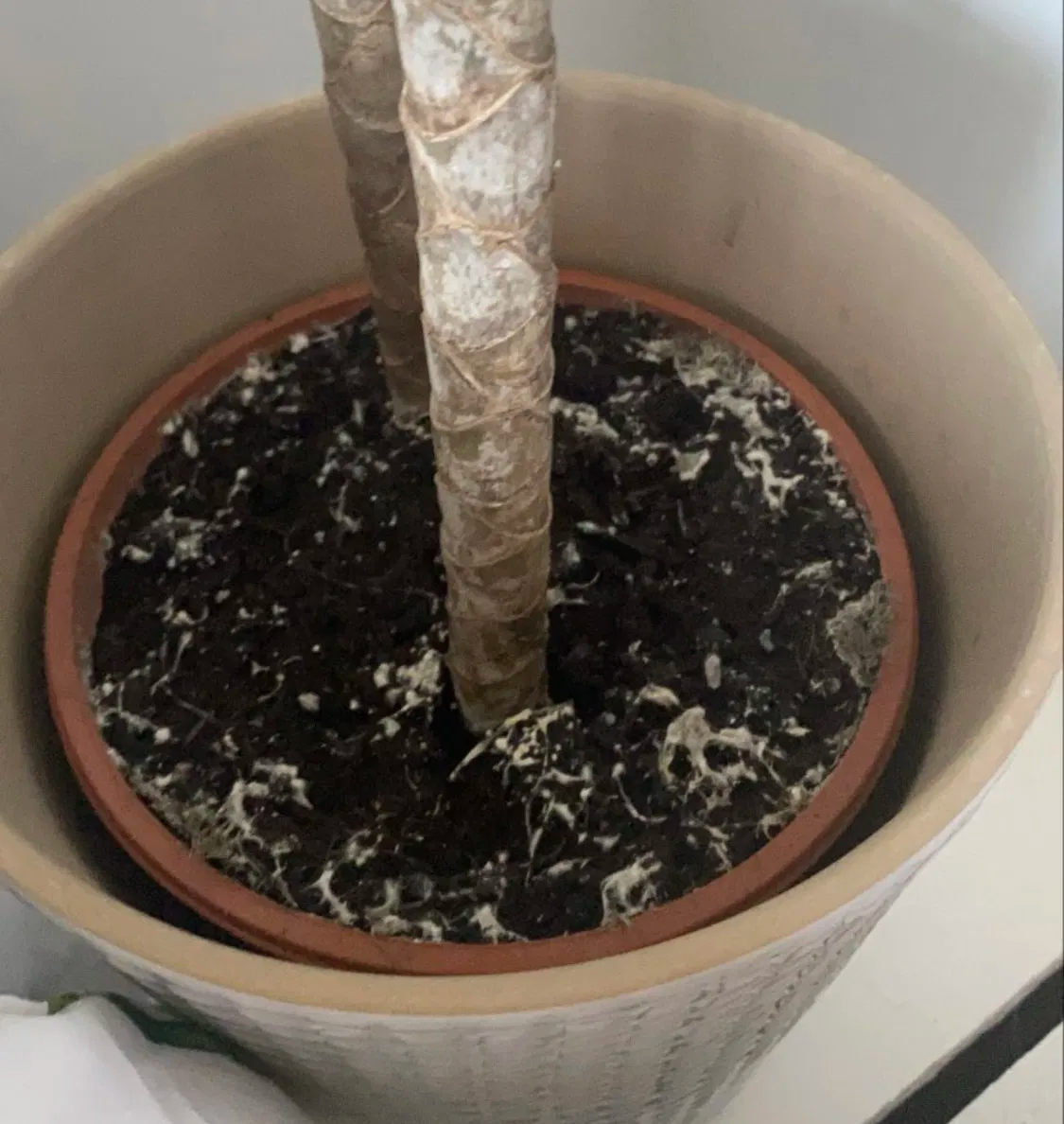
Why is there mould on my Dragon Tree's soil?
Although it won't hurt your plant, the presence of mould on the compost indicates you're watering too often. To permanently remove this, replace the top two inches of its soil with a fresh batch of 'Houseplant' labelled potting mix and only rehydrate the soil once it feels dry to the touch.
Why are there white bits of fluff on the leaves or stems?
All species of Dracaena can be susceptible to a pest called Mealybugs, which form small cotton-like substances across the foliage and stems. Luckily, this insect will take a long time to damage the plant, so there's always time to act if you spot an infestation!
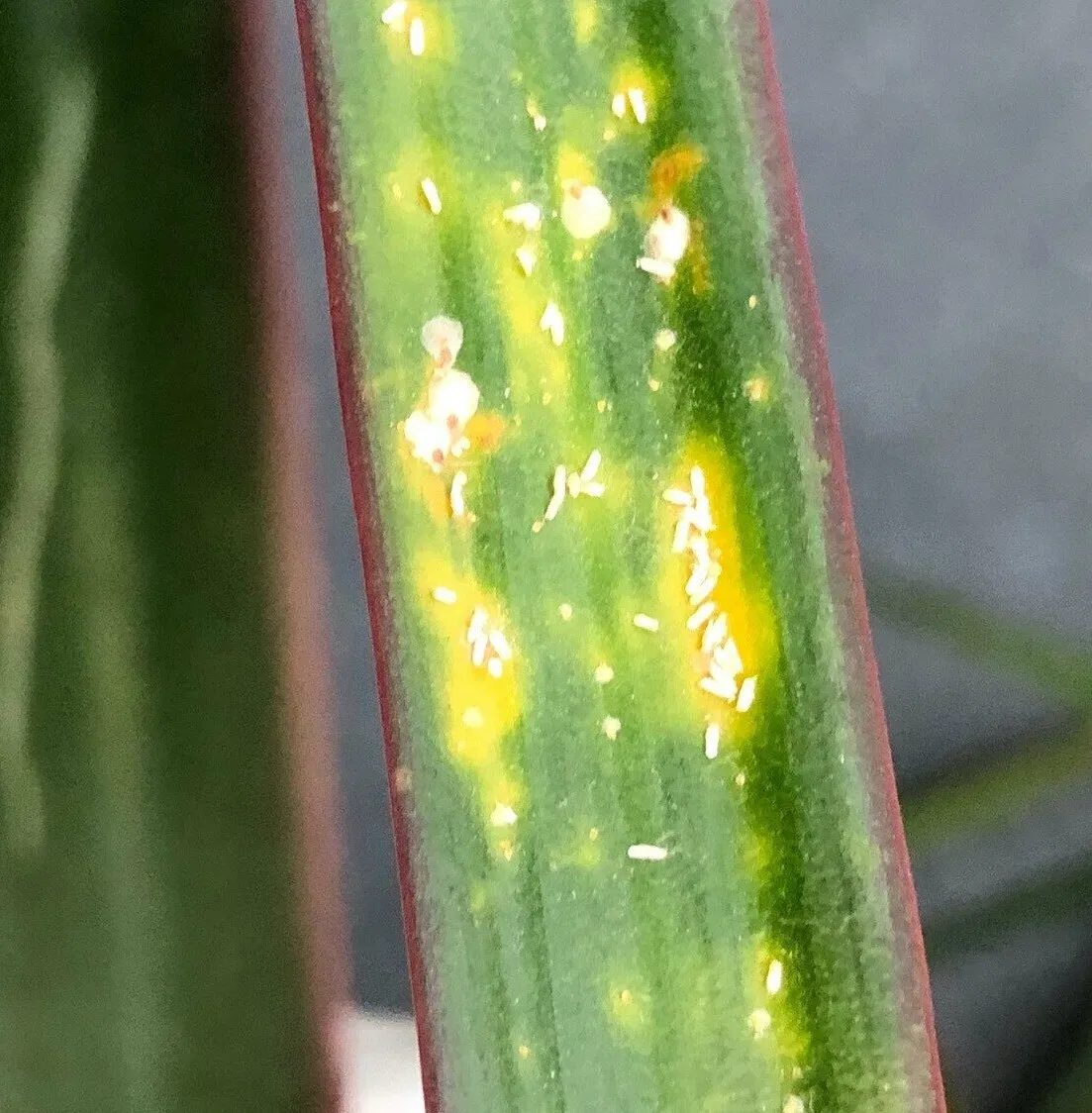
What are these small white worm-like insects on my Dragon Tree's leaves?
Unlike Mealybugs that'll create white 'fluff', 'Euonymus Scale' is another white pest that'll look like small larvae-shaped structures on the leaves. They'll cause yellowing much quicker than most insects, so be sure to wipe the leaves with a damp cloth to start the eradication process. Click here to learn more Euonymus Scale.
What are these small flies around my Dragon Tree?
If the flies are white, this is ironically called 'Whitefly' and will luckily take a long time to damage a Dracaena. For those with small back flies that hover around the soil (Fungus Gnats), you'll need to replace the top two inches for a fresh batch of 'houseplant' labelled soil. Click on the desired link to learn more about eradication.

Is using cold water bad for Dragon Trees? dracaena marginata
It's always best to hydrate your Dracaena using lukewarm water. To check its temperature, a good way is thinking "if it's too cold for your fingers, it'll be too cold for the roots, too".
What are these small brown spots on my Dracaena leaves?
If the spots are just crispy brown, this is most likely a case of dehydration, so just ensure your watering habits are up to scratch using the information on this article. If however, the spots have yellow halos around the brown legions, this could be leaf-spot disease. This disease is commonly caused by over-watering and could even kill the plant over time. Click on this link to learn about how to address these issues.

This is another example of root rot on a Dragon Tree that has killed the smallest plant in a pot of three Dracaena together. Simply pull out the dead stem to ensure the other larger plants survive in the same pot.
Can you save a dying Dracaena?
Dragon Trees can be saved via stem cuttings, to which you should follow the same step-by-step guide as one that's healthy. Only Dragon Trees with no leaves remaining cannot be saved (like the image above).
More FAQ's & Common Issues are at the bottom of this article.
How to Propagate a Dragon Tree (Dracaena)
Via Seed & Stem or 'Stub' Cuttings.
How to Take Stem Cuttings on a Dracaena (Difficulty: Easy)
- Prune the top 20cm (8in) of the stem with a clean pair of scissors. If you're unsure of the size, the cutting's stem should be the same size as a pencil. You should only take cuttings from the thin stems (that hold the leaves) and never from the thicker trunk below.
- Place the stem's bottom 8cm (3in) in a jar of lukewarm water and keep it in a sunless windowsill. Change the water every four days and check the wound (where you pruned) for signs of rot, which will be soft and brown. If this is the case, cut the dead section off and place it back into the jar (after changing the water).
- Once the roots reach 8cm (3in) in length, plant the Dracaena cutting into a 10cm pot with either a 'Dracaena' or 'Houseplant' labelled potting mix. Keep it on the windowsill to minimise environmental shock and water thoroughly once every 5-7 days.
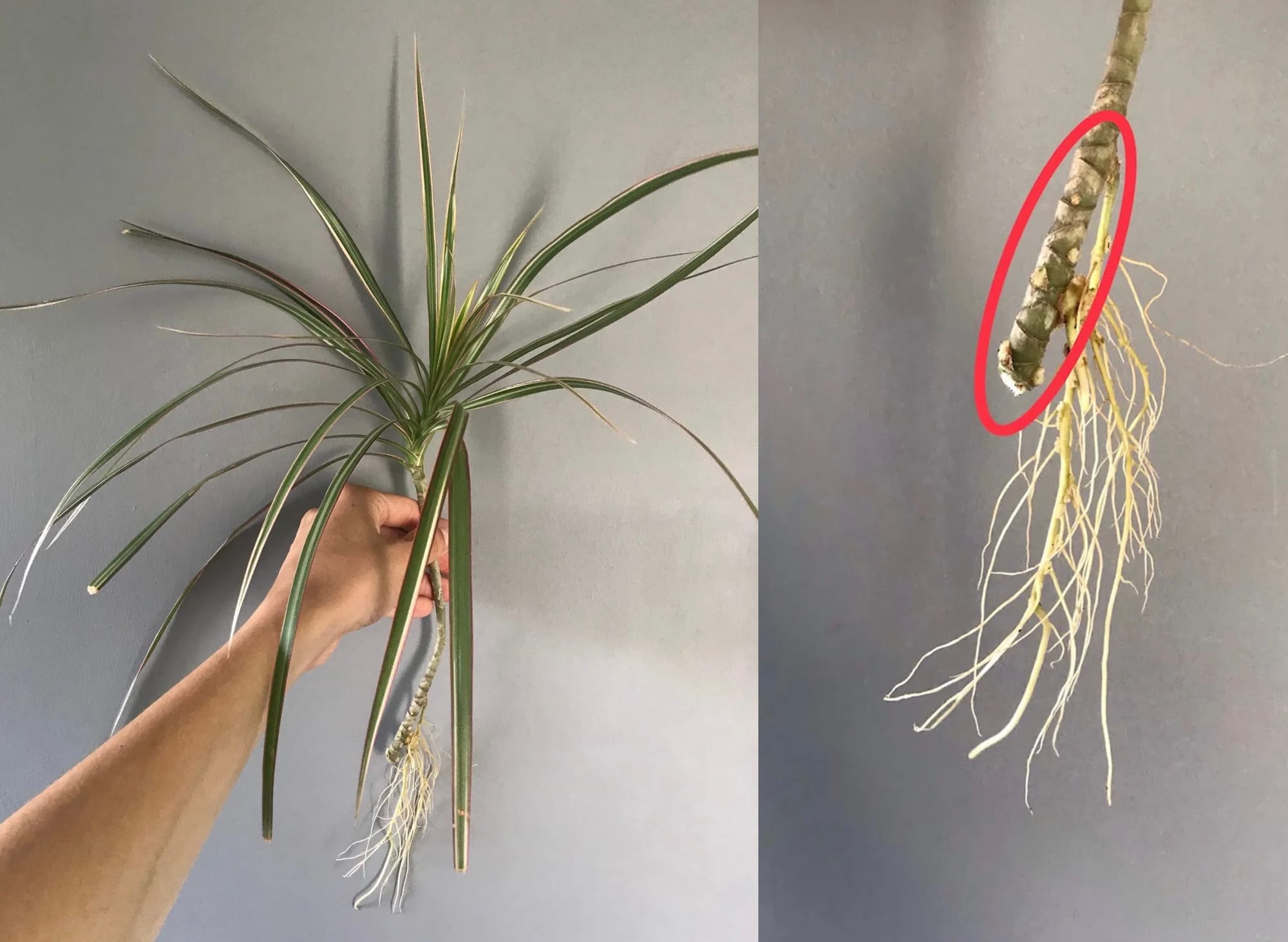
You can expect to see roots from water-grown Dracaena stem cuttings within 4-6 weeks.
'Stub' Cuttings (Difficulty: Hard) This method of propagation is the same as stem cuttings above, but without any leaves. To do this method, simply cut the thinner stem (not the main thicker trunk) into 10cm (4in) intervals. Note which side is the bottom by marking it with a pen. Then, with a 7cm pot of either a 'Dracaena' or 'Houseplant' labelled potting mix, vertically place the stub cutting's bottom quarter into the soil (2cm, 0.8in) deep). Wrap the cutting (& its pot) in a transparent plastic bag with holes to lock-in the humidity (this will slow the soil from drying out all the time). Keep the potting mix moist by checking twice a week, and keep the cuttings in the warmest windowsill in the house. Remove the bag once you see leaves emerge from the stems, which could take up to three months.
Propagation FAQs
How long does it take for a Dracaena stem cutting to root?
The speed in which you'll see roots form in water-grown Dragon Tree cuttings will vary, depending on the cutting's size and air temperature. Usually, roots will begin to form after once month.
Why are there white hard mould growing on a Dracaena stem cutting while it roots in water?
If the white area is hardened, this isn't mould and instead just the first step in root formation. The fancy name for this is 'callousing over'. There's nothing that needs to be done - roots will follow within the next month.
Can you take too many cuttings from a Dragon Tree?
Yes. Unless the Dracaena has a serious issue of root rot, you should keep at least one stem unpruned as this can sometimes shock the plant if too many cuttings are taken.
Can I plant an unrooted Dracaena cutting directly into soil?
Yes, it'll still root but the chances of success are around half (compared to rooting them in water first).
How long can Dracaena cuttings last in water?
They can last up to two years in water, but it's always best to plant the cuttings into soil as soon as the roots are 8cm (3in) in length.
Maximum Size & Age of a Dragon Tree
Dragon Trees (Dracaena) can grow up to 2.5m indoors, with a maximum age of around forty years. If yours is old and is beginning to struggle, consider taking stem cuttings to keep the 'legacy' of the plant alive!
The Flowers & Berries of a Dragon Tree
Can Dragon Trees produce flowers?
Yes. Dragon Trees will produce globular white or pink flowers that sit along a thick flower shaft, sprouting out of the very tip of a stem. The flowering process will last around a month and can producing a sweet fragrance.
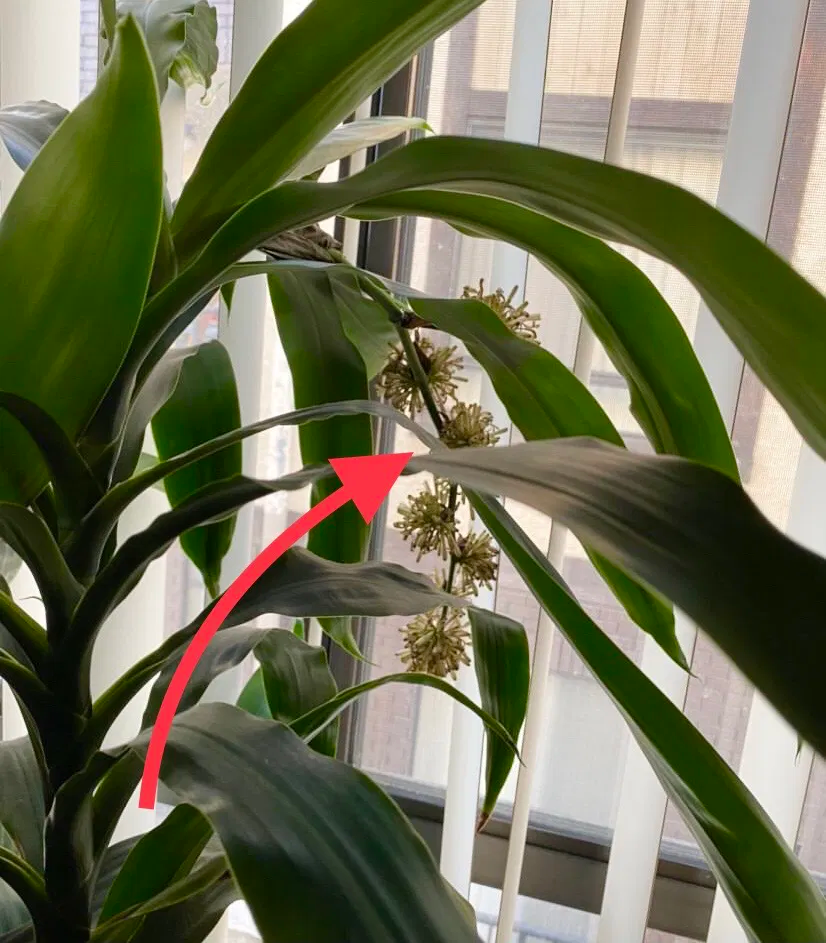
This is what a Dragon Tree flower looks like. (Pictured is a Corn Plant (Dracaena fragrans), but Dragon Trees have the same flower structure). Instagram Credit: @its_lourds_castelo.
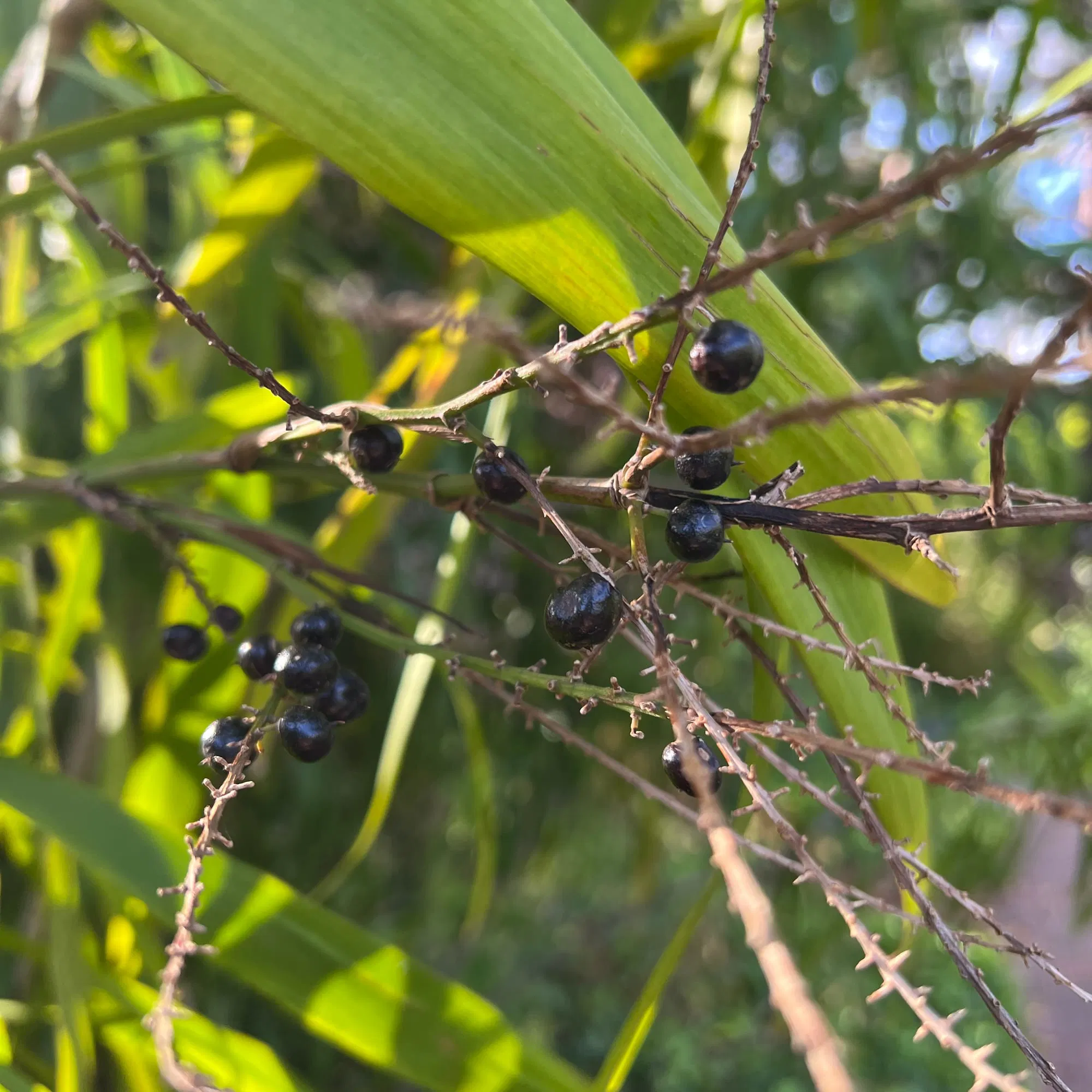
What do Dragon Tree berries look like? They'll produce black berries around 1cm in diameter that can be toxic to pets when eaten.
Origins
The genus, Dracaena, belongs to the Asparagaceæ family that holds plants such as Hyacinths, Asparagus Ferns, Spider Plants, Sansevieria & Yuccas.
What does Dracaena reflexa mean?
The name derives from the Greek for a female dragon 'Drakaina', referring to the red sap and green foliage. Today, the largest specimen in the world known as El Drago Milenario ('1,000-Year-Old Dragon'), exists in northwest Tenerife at Icod de Los Vinos. Its age is believed to be between 300 and 410 years old with a 13m-wide canopy and a magnificent ornate trunk. Dragon Tree uses over the years include red hair-dying and colouring violins by the Stradivarius thanks to its resinous sap.
The Dragon Tree's full name is 'Dracaena reflexa var. angustifolia', and was first documented by Jean-Baptiste Lamarck in 1786. 'Reflexa' can be translated from Latin to mean 'bent', possibly referring to the hanging flowers that the species produces in spring. Most garden centres will label this plant simply as 'Dracaena marginata' now though!
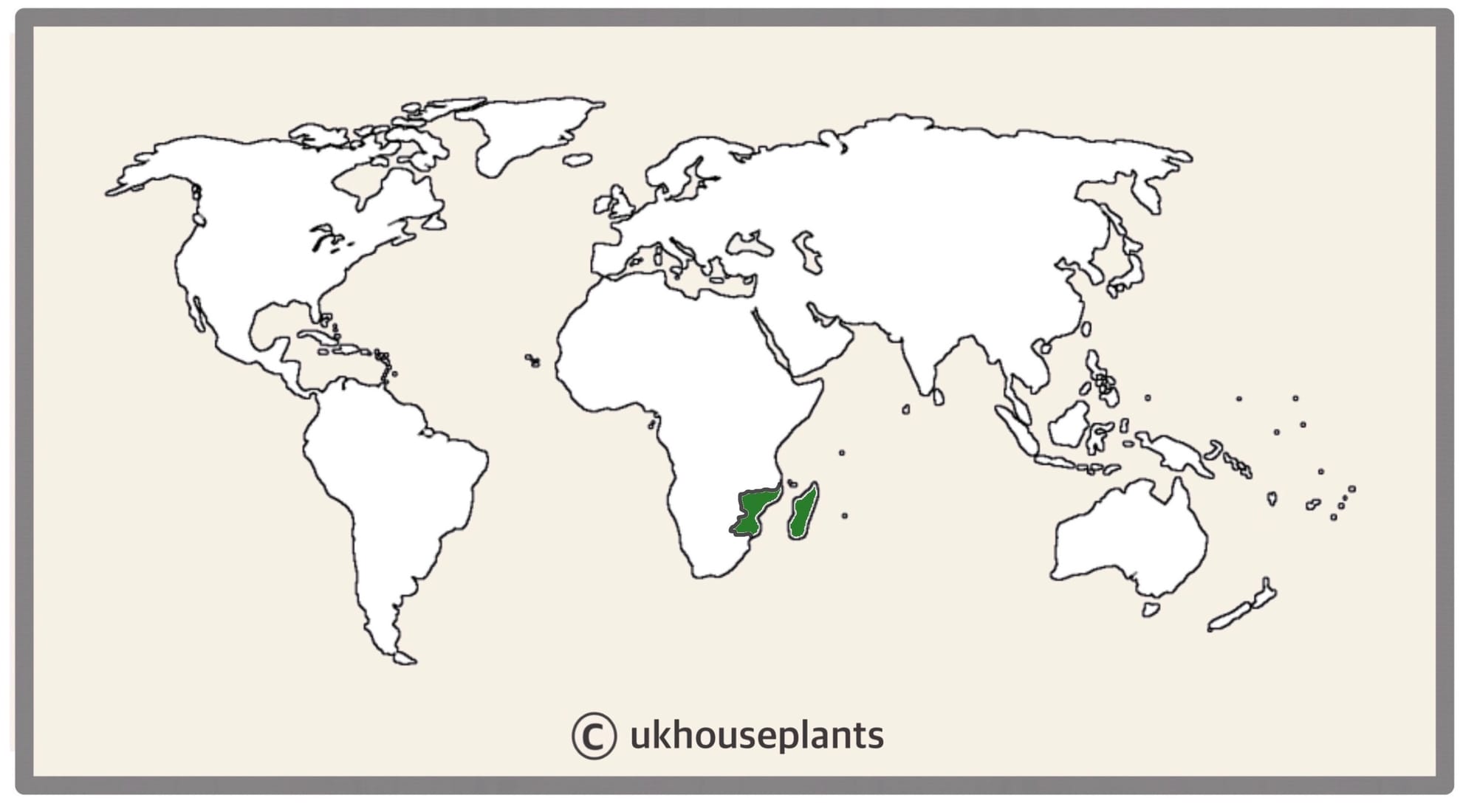
Where are Dragon Trees from? Dracaena marginata originates from south-west Africa and the island of Madagascar.
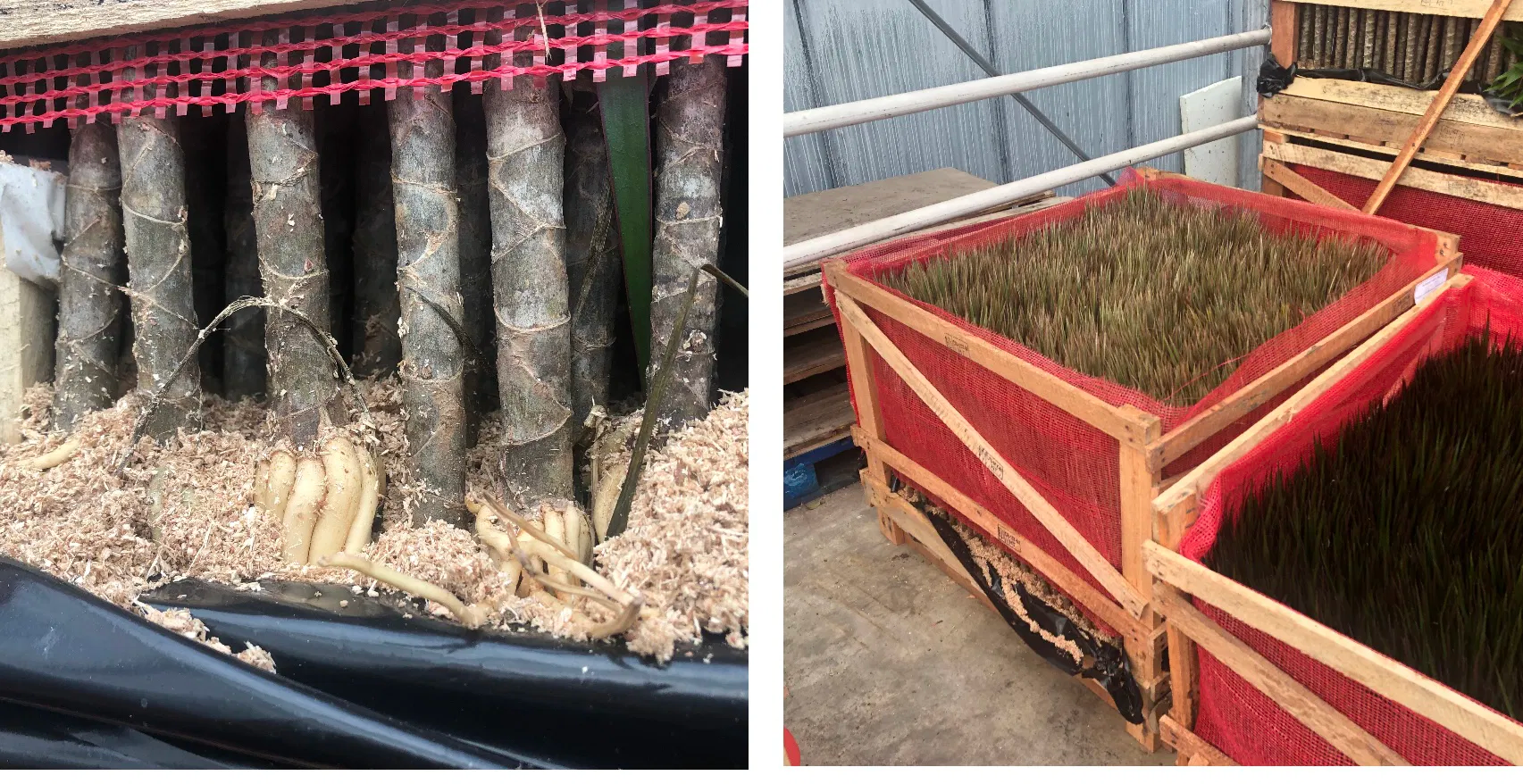
Fun Fact: Dragon Trees are often commercially grown as stem cuttings in Sri Lanka before being transported like this (in a crate of Sphagnum Moss) to European nurseries. In the EU, they'll grow in greenhouses until the cuttings are large enough (& with leaves) to sell in shops and garden centres.
More FAQ's & Common Issues with Dragon Trees
What are all of the pests that could attack a Dragon Tree?
Mealybugs (photo below), spider mites, scale, thrips & whitefly are pests that can attack Dracaena, hiding in the nooks of the stems and leaves. Always check a newly bought plant for signs of an attack.
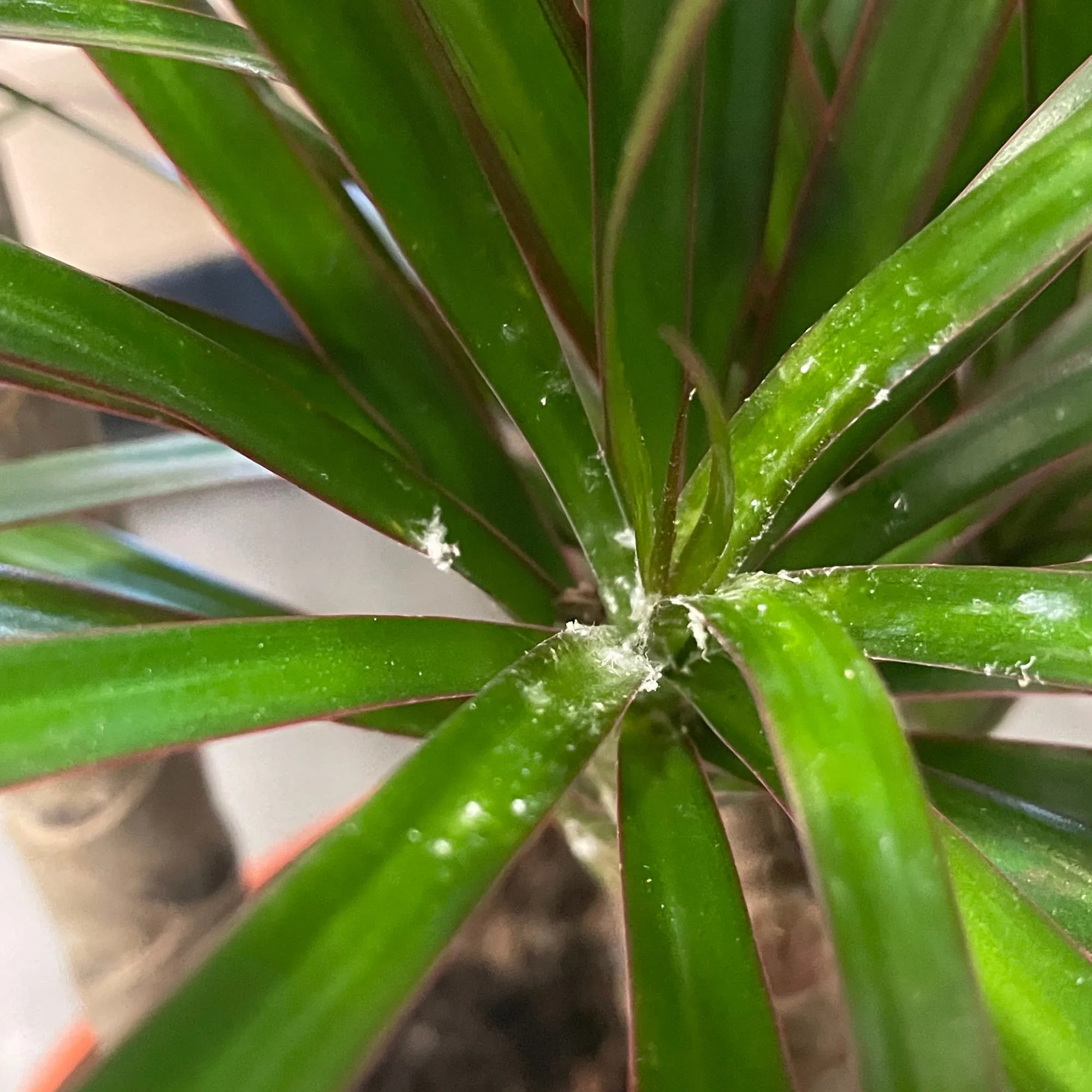
What do Mealybugs look like on Dragon Trees?
This pest will produce white cotton-like 'fluff' that'll engulf any nooks in the leaves (especially the very top of the stem, like the image above). Click on the link to learn more about eradication.
What are some diseases that can affect Dragon Trees?
Common diseases and viruses that can affect Dracaena include root rot, leaf-spot disease, botrytis, powdery mildew & southern blight.
Why is my Dragon Tree loose in its pot?
Dracaena can be wobbly in soil for many reasons, but if it hasn't been recently repotted, THE HOUSEPLANT DOCTOR™ recommends taking the plant out of the pot to check the outer-edge of the rootball for signs of root rot.
Are Dragon Trees (Dracaena marginata) poisonous?
Dragon Trees are poisonous when eaten, which includes the leaves, stems, berries and roots.
Why can I peel the bark from my Dragon Tree's stem?
This unfortunate is not good news. The plant has been over-watered and this is a byproduct of death travelling through the plant. You must take cuttings to save the 'legacy' of the plant by following tips in the 'Propagation' section of this article.
Are Dragon Trees (Dracaena) air-purifying?
Yes, but recent studies have shown that you'll need up to 1,000 houseplants per m² to make a difference to indoor air quality.
Where can I find Dragon Trees to buy?
All garden centres and DIY stores will cheaply sell Dragon Trees.
Should you prune Dragon Trees back?
Yes, you can cut the top 20cm (8in) of a Dracaena's stem to reduce the height and promote new shoots to appear further down the stem. Root the prunings in water to create new plantlets.
Why has my Dragon Tree cutting died?
There are several reasons why your Dracaena cuttings haven't rooted well, including: the time of year (spring or summer is best), its size (Dragon Tree stem cuttings should be at least 10cm (3in) at the very smallest), poor growing conditions (replace water weekly for water-propagated cuttings, and avoid over-watering for soil-grown plants), and its growing environment (a bright sunless windowsill and warmth is important).
Is tap water safe for my Dragon Tree?
Yes, you can use tap water for Dracaena as the chlorine levels in our taps shouldn't hurt them. Use a water conditioner (like Seachem Prime) if you're worried about chlorine, fluoride or hard metals in your tap.
Do Dracaena like to be misted?
Dragon Trees don't mind being misted, but it won't increase the humidity if this is what you're wanting to do. They are happy with average room humidity!
Why is the oldest leaves of my Dracaena dropping off?
Dragon Trees can shed their lower leaves because of not enough light, low temperatures (below 12ºC, 54ºF) or root rot. Check its location in your home (for adequate light and warmth), as well as having a quick look around the outer edge of its rootball for rot. Don't disturb the roots though as this could cause 'transplant shock' if you pull soil from them!
Where is the best place to put a Dracaena?
Dragon Trees prefer to be kept either within 2 metres (6 feet) of a window, or in a windowsill itself. They don't mind up to three hours of direct sunlight a day, so try keeping it in an east or west-facing window.
Book a 1-to-1 Call with THE HOUSEPLANT DOCTOR™
If you need further advice with your houseplants, book an advice call with ukhouseplants' friendly and expert writer today! This can be done via a video or audio call on most apps, including Facebook, FaceTime & Skype. A ten-minute call costs £5.99 (US$7), or £15.99 for thirty minutes. You can ask multiple questions, including queries on plants, pests, terrariums, repotting advice and anything in between. Please consider supporting this service to keep ukhouseplants thriving!